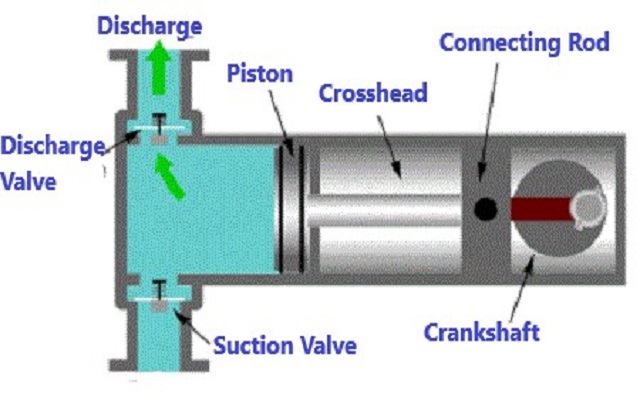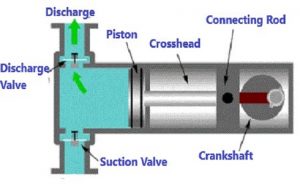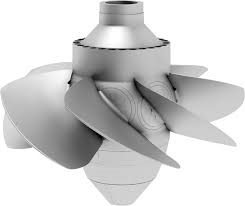How does a Reciprocating Compressor work? An-Overview

A reciprocating compressor is a well-known type of positive displacement compressor that sucks air into a chamber and compresses it with a reciprocating piston. In these compressors, the compressing and displacing element is the piston, which interacts with each other inside the cylinder. These compressors use pistons to compress air or gas at very high pressures. In these compressors, the air first sucks into a chamber and compressed by reducing the area of the chamber, and that area reduces by the piston. Reciprocating compressors mostly found where high pressure and low flow (or continuous flow up to 30 bar) require. These compressors mostly use for hand tools, dust cleaning, small paint jobs, commercial use, etc.
A reciprocating compressor is a specialized device because they have active components that rotate in rotary and linear directions. They play an important role in any process in which they work. Therefore, the health of the reciprocating compressor should be monitored more than adhering to general vibration monitoring rules. The reciprocating air compressor is powered by an electric motor or diesel/gas engine.
Components of Reciprocating Compressor

1) Frame
All revolving parts of the compressor connect to the frame cylinder and crosshead guide. Compressor manufacturers rate the frame for maximum continuous horsepower and frame load.
Detachable compressors are usually mounted in a balanced-contrast configuration, with adjacent crank throws 180 degrees apart and separated by a single crank. The crank is arranged so that the speed of each piston is balanced with the speed of the opposing piston.
Integral compressor usually consists of compressors and engine-power cylinders mounted on a single frame and driven by the same crankshaft. Cylinders in integrated compressors are usually mounted on one side of the frame only.
2) Cylinder
Cylinders are pressure vessels that contain compressed air, and they are one of the most important components of a reciprocating compressor.
In large low-pressure cylinders, these parts are made of cast iron and removed from the mainframe. Cylinder attaches to the frame by a medium called the far piece.
Alternatively, small high-pressure cylinder compressors made of steel are connected directly to the main body of the compressor.
Cylinder discharge valves support the plate and suction and sometimes have replaceable liners or sleeves that give the worn part of the cylinder a regenerative surface.
The liners do not slip off the surface. Therefore, if the cylinder is not working or not working, it can easily replace rather than buying a completely expensive new system.
3) Distance Piece:
The distance part isolates between the compressor cylinder and the compressor frame. It may be single, double or extra-long compartment arrangement.
In the single-compartment design, the space between the cylinder packing and the diaphragm is long so that no part of the rod enters both the crankcase and the cylinder stuffing box. The oil varies between the cylinder and the crankcase.
For Toxin service, a two-compartment design may use. No part of the rod will enter the crankcase and the compartment adjacent to the gas cylinder.
On the other hand, the distance part helps to separate the part of the piston rod that enters the crankcase. The second part of the rod that enters the cylinder transmits its lubrication to the distal part.
As such, the lubricant does not enter the cylinder to contaminate the compressed gas.
Effective ventilation requires ensuring that process gas does not contaminate crankcase oil.
Each compressor must have a separate vent and drain system for packing blanks and pieces. The remote grinding and packing pits should be piped into an open vent system that is at least 25 feet away from the engine exhaust and ends horizontally outside and above the compressor enclosure. The distance part must pipe into a special sump that can manually remove the grinding drain.
4) Crankshaft
The crankshaft in the compressor is the main shaft and the second is the motor shaft.
The shaft rotates around the frame axis and drives the piston, piston rod and connecting rod.
- The connecting rod connects the crankshaft with the cross-head pin.
- The head cross changes the rotational speed of the connecting rod into a linear, oscillating motion that drives the piston.
- This part is made of forged steel crankshaft. This occurs in large compressors operating at more than 150 kW (200 hp).
- For machines operating with less than or equal to 150 kW, an elastic iron crankshaft is used.
Above and below this, the crankshaft in a reciprocating compressor connects directly or indirectly to the electric motor using a belt and cover system.
When the motor shaft rotates, the crankshaft also makes rotary motion, which gives the piston the ability to complete its reciprocating motion inside the cylinder. But first, a rod should attach to the crankshaft and rods so that the piston can move up and down.
Advantages and Disadvantages of Reciprocating Compressors
Advantages:
- High Reliability
- Low Cost
- It has an easy maintenance
- It has more power than Centrifugal Compressor
- These compressors are best for high pressure
Disadvantages:
- The reciprocating compressor has high initial cost than other positive displacement compressors
- It has low efficiency than centrifugal compressor




